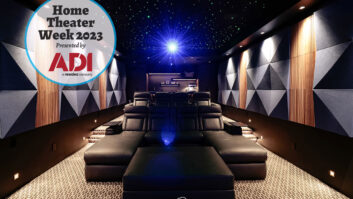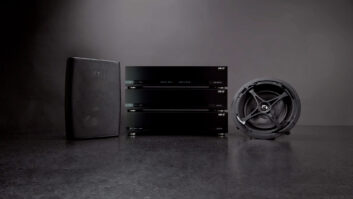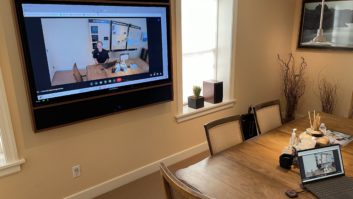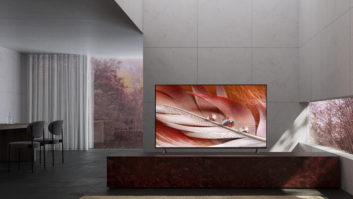Only a few industry icons have spent their life studying what makes a speaker work well for the majority of listeners and rooms. We may as well listen up and take note, so that we can deliver the best of the best to our wanting customers.

It’s important to specify speakers that not only have good direct-sound response, but also have good global sound power response.
The simple, distilled bottom line goes like this: A typical speaker is going to send a thin beam of sound energy toward the listener’s ear, and a lot more energy everywhere else in the room, reflecting off the wall surfaces, and eventually filling the room with a net sound character that is mostly the result of its global “balloon” of sound energy, known in electro-acoustics as the “sound power.” So in fact, a listener’s ears get a lot more of the sound reflections from the room surfaces than the direct sound. For the direct sound and reflected sound energy to match in a typical home theater, you have to move up to six feet from the speakers! Anything past that is dominated by the reflected energy field. One purpose of acoustical treatments is to tame this a bit, reducing the reflected energy, but never more than by 20 percent, or else the sound quality gets unnatural.
You can see why it’s important to specify speakers that not only have good direct-sound response, but also have good global sound power response. You want the quality of what reflects off the walls to be smooth and to match what is sent directly to the listener’s ears. Note that humans tend to lock on the response of the direct sound for frequencies above 1kHz, and gradually more of the sound power below that.
My purpose here is to help you pick speakers that will generally sound better in your installations, and will generate more client satisfaction, with less last-minute futzing by your technicians. Of course you want to start with products that are reliable, well built, and are at the right price point, etc. But then you need to pay attention to this issue of direct and sound power response. In the ideal world where it only rains at night, and your clients are all pleasant and pay on time, your speaker vendors would disclose this response data in simple charts, and your design team would know how to use these charts. In the real world, there are a few rules of thumb you can use to guide the selection decisions:
1. Avoid two-way speakers with large woofers, 6.5 inches and above.
The typical crossover from the woofer to the usual 1-inch tweeter is about 2.5kHz, and woofers tend to beam a fair amount at that frequency, which means that the overall room sound will be missing some energy in the 2kHz to 3kHz region, and dialog will sound weak, and possibly lack in clarity. Also, listeners at the edges of the seating area will hear that hole in the upper midrange, and strain further to hear what is being said. A properly executed three-way speaker with 8-inch woofer, 4-inch midrange, and 1-inch tweeter can avoid all this, as long as the crossovers are all properly aligned.
2. Avoid those “center” speakers with two woofers straddling a tweeter in the middle.
These are the worst, as the pair of woofers beam and lobe like crazy before the tweeter kicks in, so the problem from above gets even worse. Note that some of these speakers are in fact known as 2.5 way, which means that one of the woofers is dropped off long before 1kHz, and that makes it all work better… and cost more! That’s OK; it’s worth it.
3. Because you can’t usually get the data I discussed above, you can easily check out the basic character for yourself.
Try playing some pink noise into the speaker, listen right in front of it, then listen off-axis out to at least 60 degrees in all directions. Pick speakers that don’t change too much; your ears will tell you right away. Hey, for very modest sums you can actually measure this by using spectrum analyzer test equipment. You can download smartphone applications that work well as comparative tests, or you can use REW from Hometheatershack.com along with a basic test microphone from Behringer or Dayton Audio and a USB converter. Measure the speakers at about 3 feet distance, preferably outside. Start with the direct axis, and save that curve, then look at the responses as you move the mic in 10-degree increments left and right, and up and down from axis. With the computer programs you can save all the data and look at it as comparisons.
Please do understand that this isn’t a subtle issue. It can make a very large audible difference to the sound that your clients hear, and therefore their satisfaction with the overall results of your work. As long as you remember that much more of the sound bouncing around the room enters their ears than the direct sound from the speaker, you will get why I even bother talking about this today.
Chase Walton contributed to this column.
Anthony Grimani ([email protected]) is president of Performance Media Industries, with offices in San Francisco, Los Angeles, and Paris, France.







